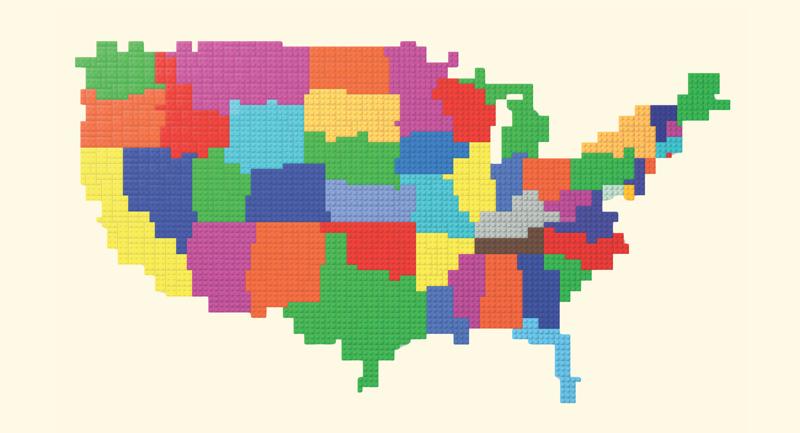September 1, 2020
•
5 min (est.)•
Vol. 78•
No. 1Show & Tell: A Video Column / Time for Competency-Based Grading?
Pandemic-related learning gaps suggest it may be the right way to go now.
Credit: Copyright(C)2000-2006 Adobe Systems, Inc. All Rights Reserved.
Many of us were in scouting organizations as children. Proficiency badges were earned based on completing experiences that culminated with meetings with the troop leader. Nancy recalls earning her Collector badge in Girl Scouts by starting a coin collection, labeling her coins, visiting other coin collectors, and setting up a display to present to her troop. Three elements were present: choice in what to collect, a self-paced completion time, and a culminating task. Nearly all the incremental requirements for the badge had two or three options for completion. In retrospect, this was a form of competency-based education.
Now imagine if badges were earned solely by attending scout meetings and completing activities the troop leader designed. That arrangement might lessen the motivation of some scouts to learn about something new. Leaders and youth alike might be prone to value compliance more than learning.
Yet schools often employ a grading system that unintentionally follows this model. We award kids a credential (a good grade) for having effectively completed teacher-selected work. Of course, teacher-directed activities are carefully selected to lead to learning. Yet they limit students' discretionary role in how they learn. This grading method privileges compliance at the expense of motivation.
Grading doesn't have to work this way. Competency-based grading is one doable step toward deepening a focus on learning.
Competency-based education (CBE) has been around for decades, but mostly on the outer edges of K–12 education. CBE allows students to demonstrate their proficiency in a course while working at a flexible pace, through opportunities for personalized learning. Many adult educational, vocational, and corporate programs offer self-paced learning that yields microcredentials to be applied toward industry standards. Programs like Khan Academy use CBE in their online courses. However, widespread implementation in K–12 schools continues to prove a challenge. Most states still operate under time-based Carnegie units that factor "seat time" as well as academic mastery into course requirements.
The rapid deployment of remote learning in spring 2020, in response to the pandemic, caused educators around the world to re-examine what school looks like. Most school districts devised "hold-harmless" grading policies: Students could improve existing grades by participating and completing projects, but—given the circumstances—couldn't lose points (say, sliding from a B- to a D by year's end) even if they did substandard or no schoolwork. Educators worked to engage all students, but grades were not harmed if students disengaged for any reason. In some schools, lots of students disappeared; they didn't log in to online learning systems or complete any work. Some likely checked out because they decided the grades they had in March were good enough.
With this reality, educators confronted the open secret about traditional grading: It doesn't truly motivate learning, although it often does motivate compliance with schooling activities. Guskey and others have noted that poor grades don't motivate students to try harder. It seems "good enough" grades don't either.
Systems-level reforms are complex and unwind across years, but an inability to do everything shouldn't become the excuse to do nothing. This principle applies to taking initial steps down the road to competency-based learning. Since 2008, the school where we work has taken this step by shifting to competency-based grading.
This shift too was borne from a crisis. In 2007, fires ravaged our community. Schools were shuttered for a week. The return to schools coincided with first-quarter grades—and our staff learned that 55 percent of Algebra 1 students were failing.
Although students' hiatus from school didn't cause this widespread failure, the pause in schooling spotlighted it for us—and inspired us to innovate our assessment and grading methods. We realized giving points for homework (compliance) and not focusing on students' understanding of content (and reteaching based on students' demonstration of learning) were practices not serving us well.
The math department vowed to do better. Within two years, our entire school had embraced the practice of competency-based grading first developed through that department's leadership. Students' grades are wholly based on their mastery of competencies within subject areas, as measured by unit exams and other performance assessments. Students are required to pass each competency at 70 percent or better. They have opportunities to retake parallel exams until they reach or exceed this bar.
Competency-based grading dismantles subjective evaluations of effort and "points" for compliance-oriented activities like bringing materials to class. The biggest change, however, has been no longer awarding points for homework and in-class assignments. Please note that we did not say that there are no homework or in-class assignments; there are, but teachers don't attach points to them anymore. Such efforts are viewed as formative experiences leading to competency of standards.
We're grateful this system was in place when our school had to scramble to do online-only learning. Students already possessed dispositions about learning that weren't based on an incremental point system. Our county mandated "hold-harmless" grading policies, and we recognized that personalized learning was more crucial than ever. Many teachers developed modules that provided students with more choices to demonstrate their competency.
In the video accompanying this column, Aida Allen-Rotell gives a "tour" of her distance-learning visual and performing arts course. She explains how students can meet standards for critique through choosing one of several different modules. With seat time no longer a factor, our teachers have handed over pacing to students. Kids don't need to take nine weeks to learn the content if they can do so in six. And those who need more time can take it. Despite not being required to engage, 97 percent of our students improved their grades during the pandemic. We averaged more than 4,000 log-ins per week.
Seat-time requirements have long been a barrier to full implementation of CBE. But with the recent switch to remote learning, we're seeing time take on new meaning in virtual courses. At our school, even before this switch, disbanding traditional grading gave us an opportunity to examine what personalized learning and choice might accomplish for our students—and how basing grades on meeting key competencies helps that effort. Our established competency-based grading made it easier to enact online learning modules. Whether face-to-face or remotely, competency-based grading moves us closer to fostering self-directed learners.
End Notes
•1 Guskey, T. R. (2011). Five obstacles to grading reform. Educational Leadership, 69(3), 16–21.
•









